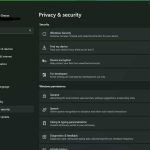
You know that feeling. You have a conversation about, say, hiking boots, and suddenly your feed is flooded with ads for them. It’s convenient, sure, but also a little creepy. It’s a stark reminder that on today’s social networks, you are the product. Your data—your likes, your location, your late-night searches—is the raw material for a massive, centralized advertising machine.
But what if there was another way? A model where you own your digital identity, your content, and your connections? That’s the promise—the revolution, even—of decentralized social media. Let’s dive in.
The Centralized Problem: Your Data in Someone Else’s Vault
Think of platforms like Facebook, Instagram, and Twitter as giant, walled-off digital castles. They own the walls, the moat, and everything inside. You, the user, are a guest. You can live and play there, but you have to follow their rules. And all your possessions—your photos, your friend list, your personal information—are stored in their vault.
The castle owners can change the rules on a whim. They can decide what you see, who you can talk to, and they can even kick you out, locking away your digital life. This is the core issue with centralized social media platforms and user data control. You have very little say.
Here’s the deal with the current model:
- Data Monetization: Your personal information is packaged and sold to advertisers. It’s a multi-billion dollar industry, and you don’t see a dime.
- Algorithmic Control: Opaque algorithms decide what content goes viral and what gets buried, often prioritizing engagement over your well-being.
- Privacy Vulnerabilities: A single data breach at a central company can expose the information of billions of people. It’s a massive, tempting target.
- Platform Risk: Your account, and all the content and connections within it, can be suspended or deleted at any time.
So, What Exactly is a Decentralized Social Network?
Imagine a social network that’s not a castle, but a bustling, open city. There are no central rulers. Instead, the city runs on a set of open-source rules that everyone agrees on—a protocol. This is the foundational idea behind decentralized social media platforms.
In this city, you own your own house (your profile and data). You can decorate it how you want, and you hold the keys. You can even move your entire house to a different neighborhood (a different app or server) without losing your friends or your belongings. This is possible because the underlying social graph—the map of who follows whom—is portable.
This structure is often built on something called the ActivityPub protocol. It’s the technical wizardry that allows different platforms, or “instances,” to talk to each other. So, someone on a platform called Mastodon can seamlessly follow and interact with someone on PeerTube, a video platform. This interconnected world is often called the “Fediverse” (Federated Universe).
Key Players in the Fediverse
| Platform/Protocol | What It Is | Key Feature |
| Mastodon | A decentralized, open-source alternative to Twitter. | Community-run “instances” with their own moderation rules. |
| Bluesky (AT Protocol) | A newer contender from a Twitter co-founder. | Emphasizes “account portability” so you can move your identity freely. |
| ActivityPub | The underlying protocol (like the plumbing). | Enables interoperability across different apps in the Fediverse. |
| Farcaster | A “sufficiently decentralized” social network. | Focuses on developer-friendliness and building a vibrant app ecosystem. |
The Tangible Benefits: Why You Might Actually Care
Okay, so it’s a different technical model. But what does that actually do for you? The shift to user data ownership in social networks comes with some pretty compelling advantages.
1. True Data Ownership and Portability. This is the big one. Your profile, your content, your list of followers—they belong to you, not a corporation. If you don’t like the rules or culture of one server (or “instance”), you can move to another without starting from scratch. It’s the difference between renting an apartment and owning a house.
2. Censorship Resistance and Community Moderation. Instead of a single, often inconsistent, corporate policy dictating what’s allowed, moderation happens at the community level. Different instances can have different rules. You can find a space that aligns with your values, and instances can block others that host harmful content, creating a more tailored experience.
3. A Shift Away from Manipulative Algorithms. Many decentralized platforms offer chronological feeds. Imagine that! You see what the people you follow post, in the order they post it. No mysterious algorithm deciding what will keep you scrolling for hours. It’s a calmer, more intentional experience.
4. Enhanced Privacy and Security. With no central data honeypot, there’s no single point of failure for a catastrophic data breach. Your information is more distributed and, frankly, harder to exploit at a massive scale.
It’s Not All Sunshine and Rainbows: The Real Challenges
Now, let’s be honest. This model is still in its adolescence. It has growing pains. The user experience can sometimes feel… clunky. Compared to the slick, billion-dollar interfaces of traditional apps, some decentralized platforms have a learning curve.
One of the first hurdles is choosing an instance. It’s like picking a neighborhood before you even see the house. And then there’s the issue of network effects. Your friends probably aren’t on Mastodon yet. That critical mass of people—the very thing that makes social media “social”—takes time to build.
And honestly, moderation, while more democratic, can be a double-edged sword. It requires active, volunteer-led communities to police themselves effectively, which can be a tough, thankless job.
What Does the Future Hold?
The momentum is building. People are becoming more aware of their digital rights. The conversation is shifting from just “free services” to “fair services.” We’re starting to ask not just what a platform can do for us, but what it does to us.
The future likely isn’t a single platform “winning.” It’s an ecosystem. A world where you might use one app for short updates, another for long-form blogging, and a third for video—all while maintaining a single, portable identity and social graph. The walls between the castles crumble, leaving an open, user-centric landscape.
So, the next time you feel that uncanny valley sensation of an ad reading your mind, remember: there’s an alternative taking shape. It’s a bit messy, a bit experimental, but it’s built on a powerful, simple idea. That your digital life should belong to you.










